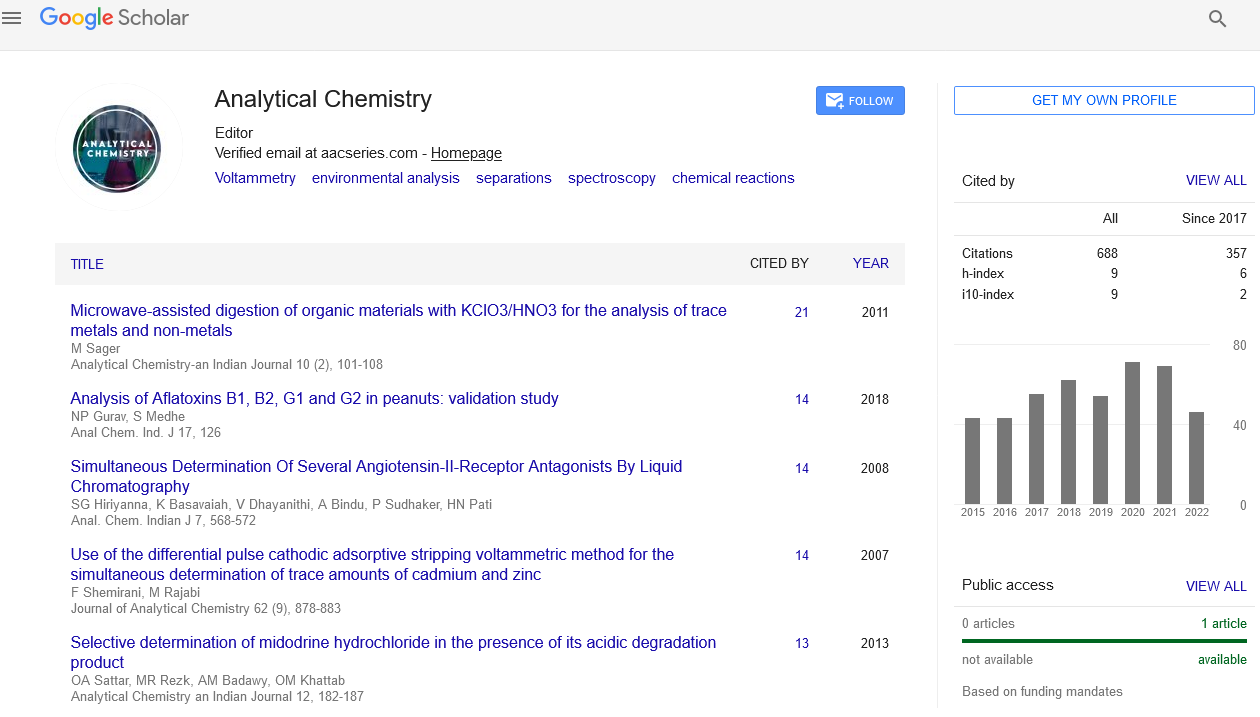Abstract
Voltammetric and CD spectroscopic studies of poly ï¡-aspartic acid-cadmium ion complex in the helix-coil transition pH region
Author(s): Akira Yanagisawa, Atushi Asano, Hiroki Kimoto, Chikako Tanaka, Emi Shinohara, Takuzo KurotsuHelix-coil transition of poly á-aspartic acid (PASP) was studied by dc polarography in the presence of Cd2+ as a marker attached to the polymer. The diffusion current of Cd2+ declined sharply in the pH range of 3.5-6.7 due to a formation ofmetal ion-PASPmacromolecular complex. The complex formation also reflects on an increase of the magnitude at ca. 222 nm of CD spectrum, suggesting that PASP forms the helix structure by coordination of Cd2+ in the corresponding pH region. Two peptide residues coordinate approximately to one Cd2+ to form the helix structure in the neutral pH region by a shift of half-wave potential. Helix content determined by the decrease in diffusion current corresponds favorably to that by CD measurements. In the lower acidic pH region, the coordination mode of Cd2+ to PASP is different from that at neutral pH region. The decrease in diffusion current of Cd2+ is independent to the further formation of helix structure. Cd2+ ion coordinates with sparsely dissociated carboxylate groups of helical PASP which bring about an aggregation of polypeptide strands. The diffusion current of the ion attached to the polymer, therefore, is a parameter sensitive to a conformational change of PASP from acidic through neutral pH region.

